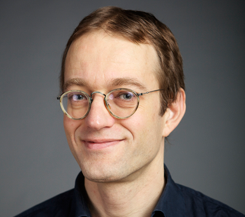will take place on Tuesday, April 12, 2016 from 17:15 to 18:15 hours in CBBM Building, Ground Floor, Room 50/51.
Host: Prof. Ulrich Krämer
Department of Neurology
Universität zu Lübeck
Abstract
Midbrain dopaminergic (DA) neurons and cortical-basal ganglia circuits play important roles in the performance and control of movements, as well as in reward processing and impulsive behaviour, amongst others. Understanding disease mechanisms in movement and impulse control disorders requires that we establish formal models which link specific components of dopaminergic circuits to individual differences in the expression within the disease spectrum.
In this talk I review how to apply computational modelling techniques to human neuroimaging and behavioural data with the goal of obtaining quantitative in vivo markers of dopaminergic transmission, which predict individual expressions of disease outcome. These models will be finessed and individualised by including genetic information (e.g., how DRD2 genotype modulates release of DA in the midbrain and thus regulates its sensitivity to inputs) and anatomical information (i.e., estimates of anatomical connection strengths obtained by diffusion tractography). With respect to the latter I will discuss whether and how quantitative and individual in vivo markers of connection strength can be obtained within cortical-basal ganglia circuitry and how these may predict individual expressions of disease symptoms.
The integration of connectivity information with non-invasive assays for phenotyping into computational modelling approaches can be used as a valuable tool for understanding and interpreting clinical data. I will present applications relating to treatment prediction in Parkinson disease and to detecting impulsivity subgroups of obesity.
Biosketch
Dr Tittgemeyer is Group Leader of the Translational Neurocircuitry Unit at the Max-Planck-Institute for Metabolism Research in Cologne, Germany. He obtained his PhD in physics at the University of Karlsruhe. He initially undertook research into the fundamentals of human anatomy and cognition at the MPI in Leipzig before moving to the MPI in Cologne in 2007 where he has since led a multidisciplinary research team. He uses brain imaging, neurophysiology and computational modelling to understand the nature of human behavior - principally reward-based behavior - and its relationship to the functional anatomy of the brain. He is a senior editor at NeuroImage.


